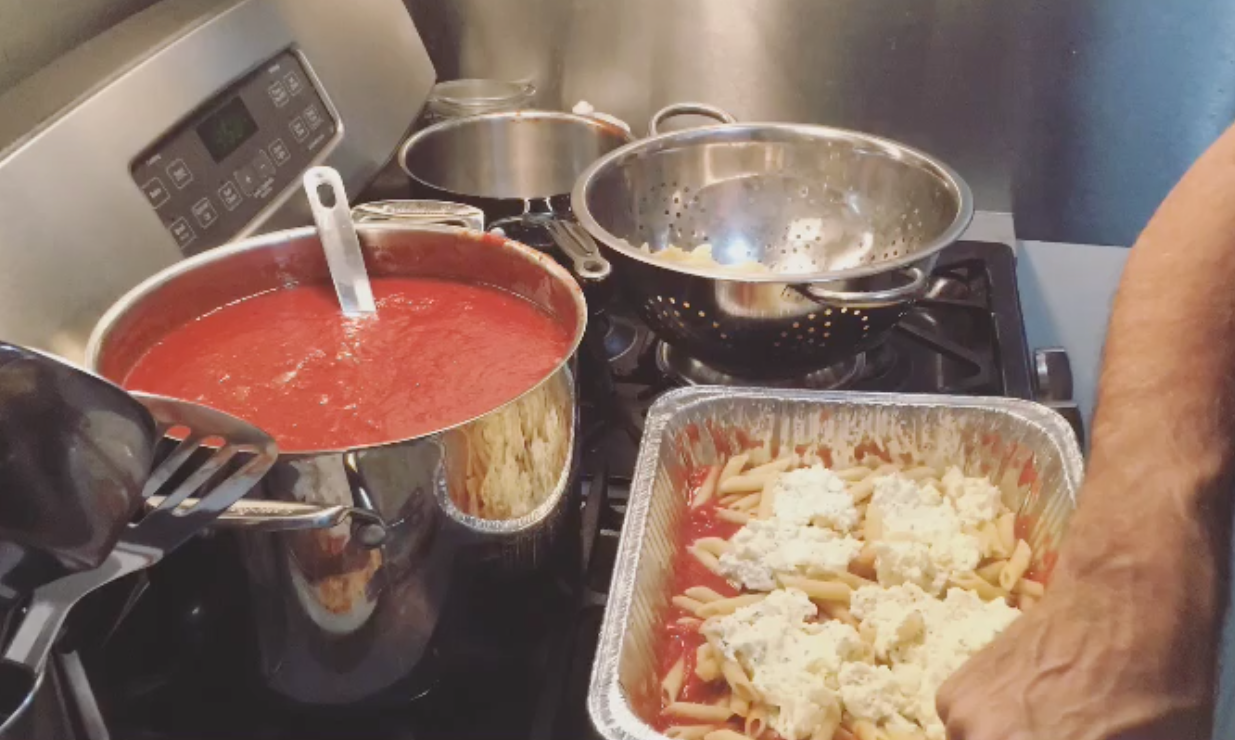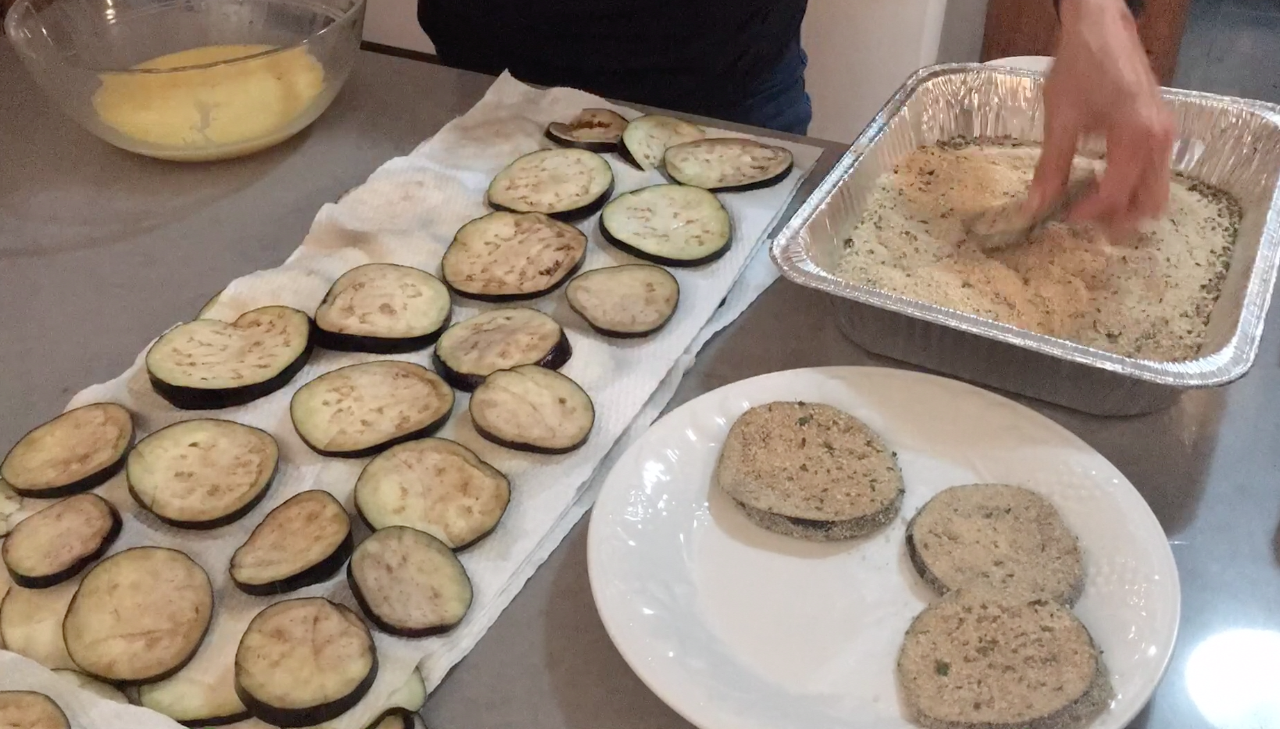Being American
By Dominique Cuoco
I consider myself lucky to have grown up in the borough of Queens, “the most ethnically diverse county in the country,”(1) in “the most immigrant friendly city in the world,”(2) New York City. I can attribute these feelings of luck to a few key attributes: my neighborhood was bursting with large, beautiful trees; I didn’t need a car to get around; and, I was exposed to an abundance of different identities and cultures from an early age. I appreciate this greatly, from interactive learning during school heritage days to play dates, hangouts, and attending family dinners with multilingual friends. I feel fortunate to have been welcomed into the cultural richness that makes up my borough of origin, and feel proud of my home city for celebrating this.
The 1964-65 World’s Fair in Flushing Meadows, Queens
Photo from the Bowery Boys, http://www.boweryboyshistory.com
Currently, New York City is home to 800 languages (3) and over 3 million foreign-born immigrants from over 150 countries.(4,5) The Statue of Liberty has served as a landmark symbol of hope since 1886, representing freedom and the pursuit of opportunity.(6) For 60 years, Ellis Island, a stone’s throw away from Lady Liberty, served as an immigration processing station for people seeking a better life, free from “war, drought, famine and religious persecution”.(7) From 1892 to 1954, over 12 million immigrants passed through to the United States from the Island.(8) Around 40% of Americans today can trace at least one ancestor back to arriving in America through Ellis Island.(9) Many immigrants who remained in New York did so because they had spent most of their savings to come to America, or because they had been welcomed by other immigrants in tenements and ethnic enclaves and had job prospects of working in a growing city. This was no different for my Italian ancestors who migrated in the early 1900s, settling in the Lower East Side and Brooklyn, and ultimately, moving to Queens.
Mulberry Street, New York
Photo by Detroit Photography
Although I identify the entirety of my heritage to be Italian, I did not grow up speaking a word of it, just like my parents. Our ancestors rejected the language, believing you needed to speak English to secure a job, to be safe, and to thrive in the new world.
It was all or nothing, no salad bowl for us.
A complete disconnection from Italy and a complete assimilation into America is what they called for, but was this necessary? I can’t say. All four of my great-grandparents completed middle school and then entered the workforce, using their hands, skillfully and beautifully. I have no idea if it would have made a difference if they taught the language to their children, my grandparents, allowing them to preserve such poignant history in the home and pass it down. The Italian community, much as other ethnic enclaves, helped each other get jobs and save money by living in multi-generational homes. Wouldn’t speaking the language, in addition to English, appear to be an asset? Still, the effectiveness of ethnic enclaves remain highly debated and controversial among academics – do they offer sanctuary or are they obstructive?(10) (Results vary depending on location and point in time).
New York’s Shifting Ethnic Mosaiac
Map by the New York Times, Then As Now — New York’s Shifting Mosaiac, http://archive.nytimes.com/www.nytimes.com/interactive/2011/01/23/nyregion/20110123-nyc-ethnic-neighborhoods-map.html?_r=0
I always wished I could celebrate my heritage through language. Although I look Italian and eat incredible home-made Italian food, when I’m in Italy and get mistaken for someone’s cousin, I can barely remark in my native tongue that they’ve had me mistaken. Clearly, language plays a huge part of one’s identity and my inability to express my feelings and thoughts in Italian presents a gap in my own identity. Sure, I could’ve studied Italian in college but should a 100% Italian woman be relying on the education system to teach her what her ancestors felt was necessary to reject?
I’m at a loss. I have no idea what it was like for my ancestors. I could not begin to imagine giving up my entire way of life and risking it on an opportunity for a potentially better one. It must have been terrifying when my great-grandfather left Italy on his own, not knowing what the future would hold. I’m grateful for my ancestors, I’m grateful to live in the land of the free. And I can only imagine the hardship that new immigrants to this country continue to experience.
Although my grasp of the Italian language may be missing, I know I can still rely on food to cultivate my identity. My parents have taught me how to make a mean red sauce, and will one day help me conquer the seven fishes. I feel lucky not to have to rely on faux Italian restaurants, of someone else’s history, or someone else’s appropriation, to feel connected with my history. Instead, I have grown my identity through replications and adaptations of my family’s recipes. In today’s world where identity is fluid, food is a valuable connector and enricher of identity.(11)
Food prevails because it is silent, it can be preserved behind closed doors, and is, well, delicious.
I’d even go so far as to argue that food is more accepted in America than the people who make it. Although Americans indicate the love of Italian, Mexican, and Thai food,(12) the opinion has not quite translated to our immigration policies. We can only take comfort in knowing that food will remain a means of advocacy for immigrant groups. Mana Heshmati, for example, opened a pop-up series called the “Peace Meal Kitchen,” protesting Trump from Detroit, serving 1 dish at a time in protest of the travel ban.(13) After selling out of delicious food in two hours, the organizers donated most of the profits to Michigan’s ACLU.
Economically, it has been said,(14) again(15) and again,(16) that “immigrants make American food great.”(17) This is a topic chef David Chang explores in his documentary Ugly Delicious.(18) Further, American cities can attribute a great deal of financial success (beyond the restaurant industry) to their immigrant populations. Currently 60% of Miami’s workforce is made up of foreign-born people, and in Chicago, San Diego, San Francisco, Los Angeles, San Jose, and Silicon Valley they range from 26% - 47%.(19) The Comptroller of New York also recently issued a report, Our Immigrant Population Helps Power NYC Economy,(20) to financially make the case for immigrants, flagging “roughly half of all workers in core New York City sectors,” technology, financial analysis, entertainment, and medical, are foreign-born.(21) Further proving that “when immigrants are threatened… our entire City pays a costly price.”
However, it is not just up to the economy to value the immigrant. It is not just up to the immigrant to welcome the immigrant. It is up to all of us, especially if you identify as being American. If you are American, you most likely exist in America because of your family’s migration to America.
The notion of acceptance and safety is what makes New York such an incredible place. That feeling of walking down the street and being 100% comfortable in your own skin. This is persistent when I travel to other highly diverse places. Doesn’t everyone deserve that comfort?
There is richness in diversity, in traditions and preservations, this means prolonged cultural identity. There is value to differences – it provides us all with an endless opportunity to share and learn and appreciate one another. Imagine if we were all the same, and our differences were scrubbed away. Or, imagine if you ate the same exact meal every day for the rest of your life. Boring? Limited nutrition value? Totally.(22) Spoiler: diversity is how we collectively thrive.
Photo by Time, You Asked: Is It Bad to Eat the Same Thing Every Day?, http://time.com/3675098/healthy-diet-plans-variety/
(1) https://www.thirteen.org/queens/history3.html
(2) https://www.thenation.com/article/why-new-york-still-capital-immigrant-america/
(4) https://www.huffingtonpost.com/2013/12/19/new-york-city-immigrants_n_4475197.html
(5) https://comptroller.nyc.gov/reports/our-immigrant-population-helps-power-nyc-economy/
(6) http://ocp.hul.harvard.edu/immigration/statueofliberty.html
(7) https://www.history.com/topics/ellis-island
(8) https://www.homeadvisor.com/r/new-yorks-immigration-era/
(9) https://www.homeadvisor.com/r/new-yorks-immigration-era/
(12) https://fivethirtyeight.com/features/what-is-americans-favorite-global-cuisine/
(15) https://www.huffingtonpost.com/entry/pro-immigrant-restaurant-receipt_us_58ca8ed1e4b0ec9d29d917ed
(19) https://comptroller.nyc.gov/reports/our-immigrant-population-helps-power-nyc-economy/
(22) https://www.healthline.com/health/eating-the-same-thing-pros-and-cons#4
Cover photo by Sydney International Food Festival







